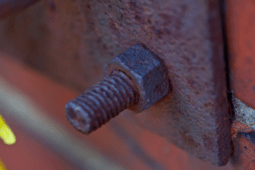How To Balance A Ceiling Fan: A Detailed Guide
Balancing a ceiling fan can be a daunting task for many homeowners, but it’s an essential maintenance step to ensure both comfort and efficiency in your living space. An unbalanced ceiling fan not only creates annoying wobbling noises but can also lead to long-term damage and decreased performance, so it’s important to know how to balance a ceiling fan.
In this comprehensive guide, we will walk you through the straightforward steps to balance your ceiling fan, helping you achieve smooth, quiet operation while extending the life of your fixture. Whether you’re a seasoned DIY enthusiast or a first-time fixer, our tips and tricks will make the process simple and stress-free.
Understanding the Importance of a Balanced Ceiling Fan
A well-balanced ceiling fan operates smoothly and quietly, enhancing the comfort of your living space. Conversely, an unbalanced fan can lead to annoying noises, excessive wear and tear, and decreased efficiency. Understanding the importance of a balanced fan will help you appreciate the need for regular maintenance.
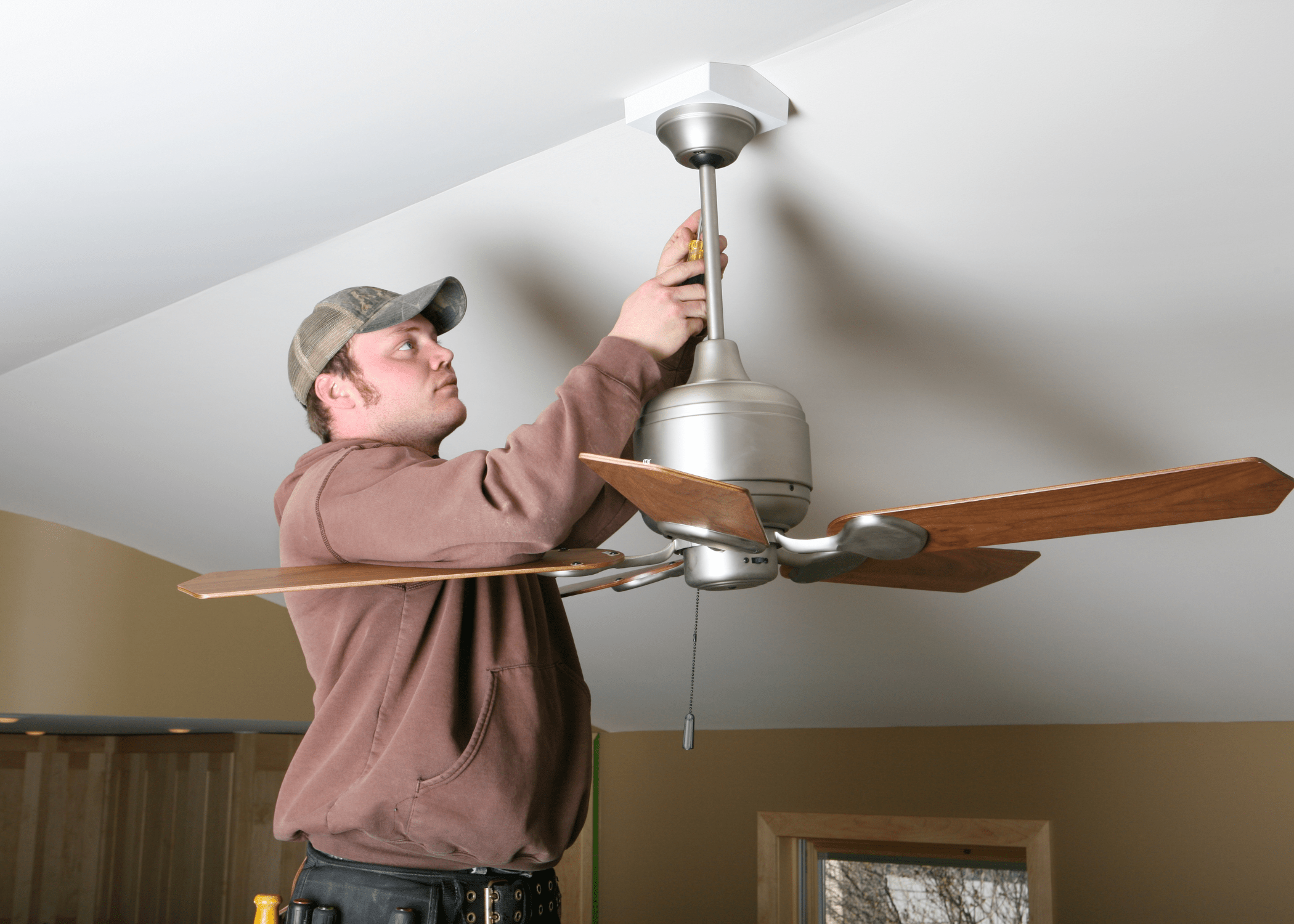
Identifying the Signs of an Unbalanced Ceiling Fan

Before you begin the balancing process, it’s crucial to identify the signs of an unbalanced fan. Common symptoms include:
- Wobbling or shaking while in operation
- Unusual noises such as clicking or humming
- Inconsistent airflow from the fan blades
Recognizing these signs early can prevent further damage and ensure a more straightforward balancing process.
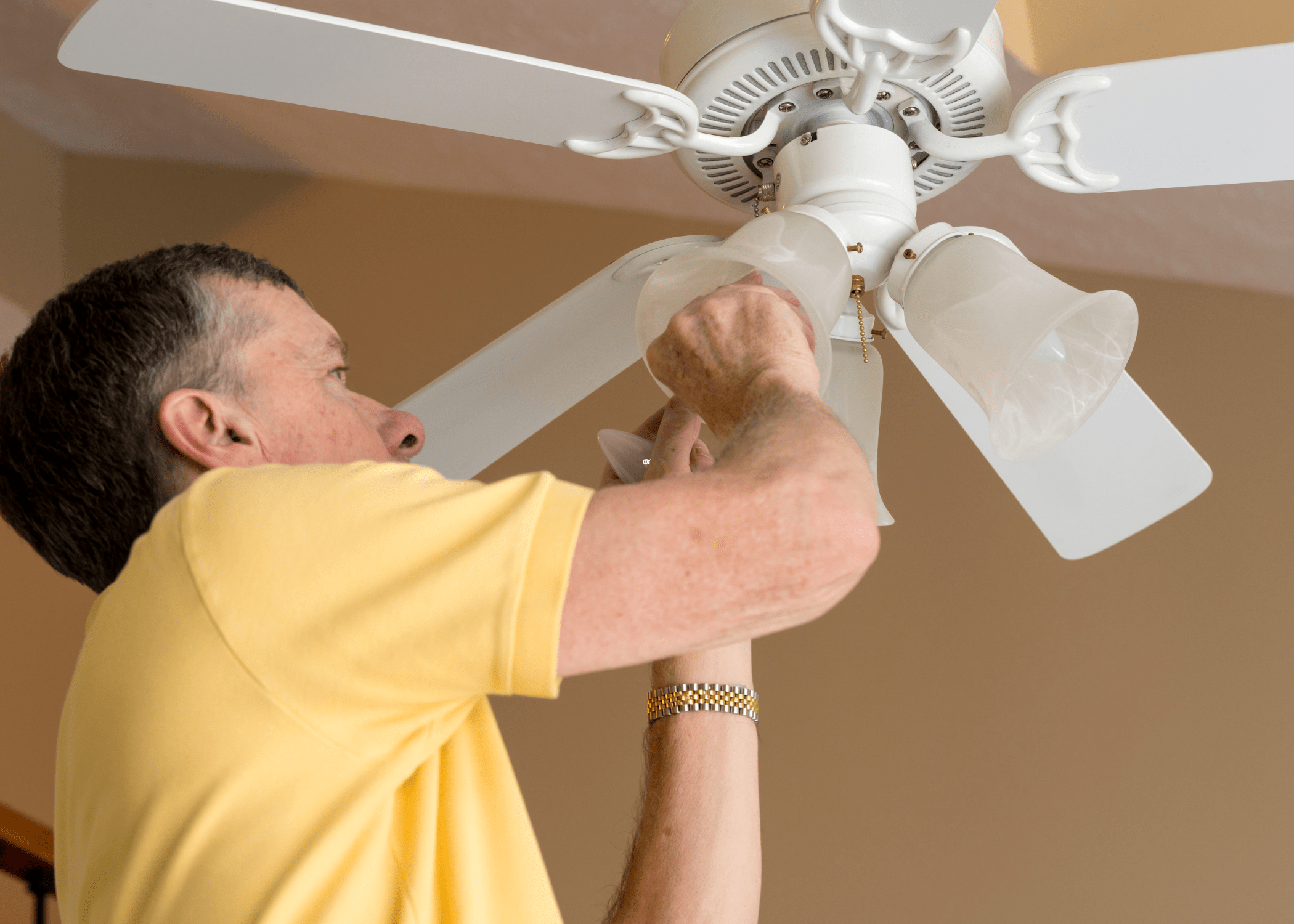
Gathering the Necessary Tools
To balance your ceiling fan, you will need a few basic tools:
- A ladder or step stool
- A screwdriver
- A ceiling fan balancing kit (available at most hardware stores)
- A measuring tape
Having these tools on hand will make the balancing process more efficient and straightforward.
Cleaning the Fan Blades
Dust and debris can accumulate on fan blades, causing imbalance. Start by cleaning the blades thoroughly with a damp cloth. Ensure each blade is free from dust and grime, as this simple step can sometimes resolve minor balancing issues.
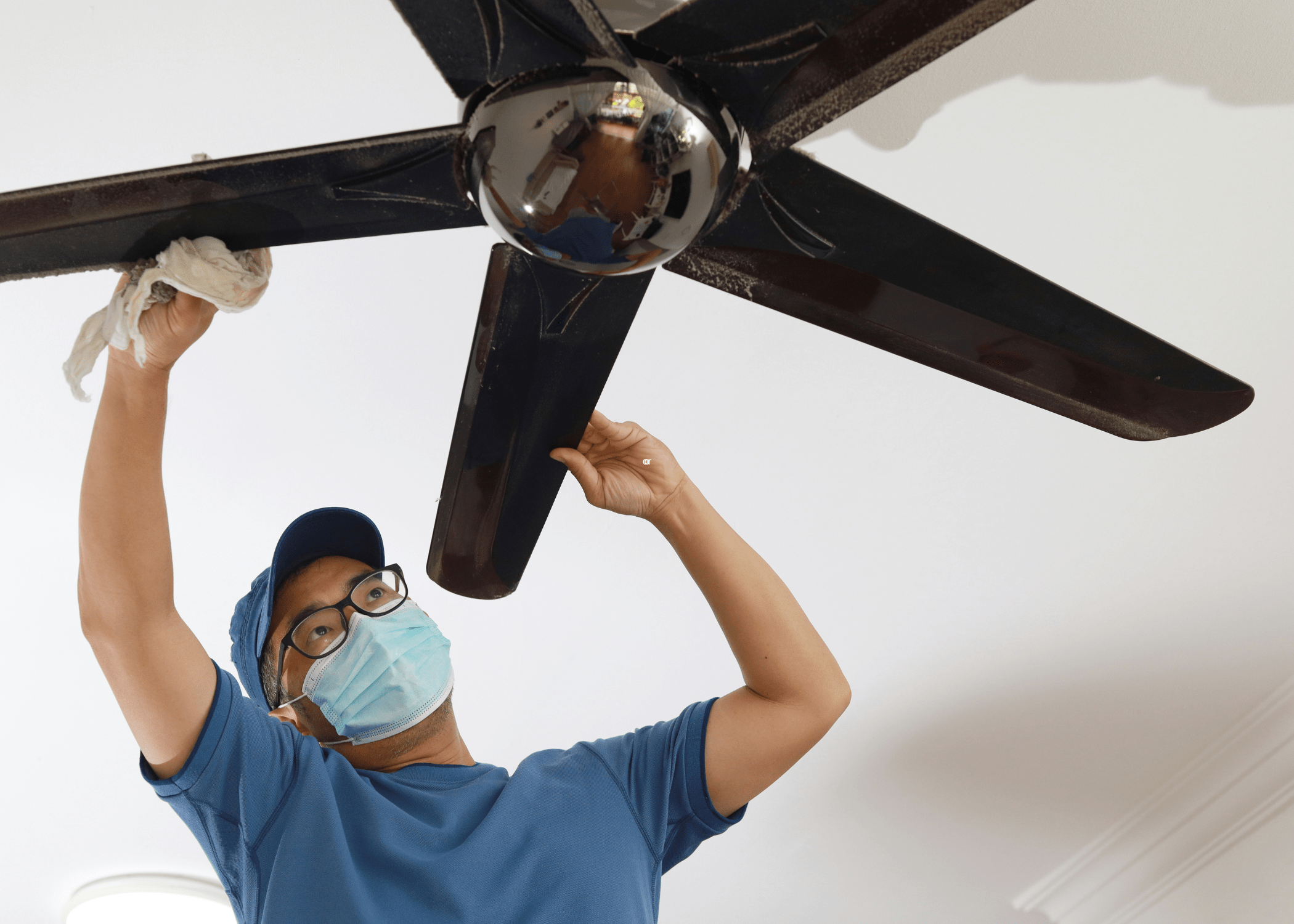
Tightening Screws and Fasteners
Loose screws and fasteners can contribute to wobbling. Use your screwdriver to check and tighten all screws and fasteners on the fan, including those securing the blades to the motor and the fan to the ceiling mount. Ensuring everything is securely fastened is essential for a stable fan.
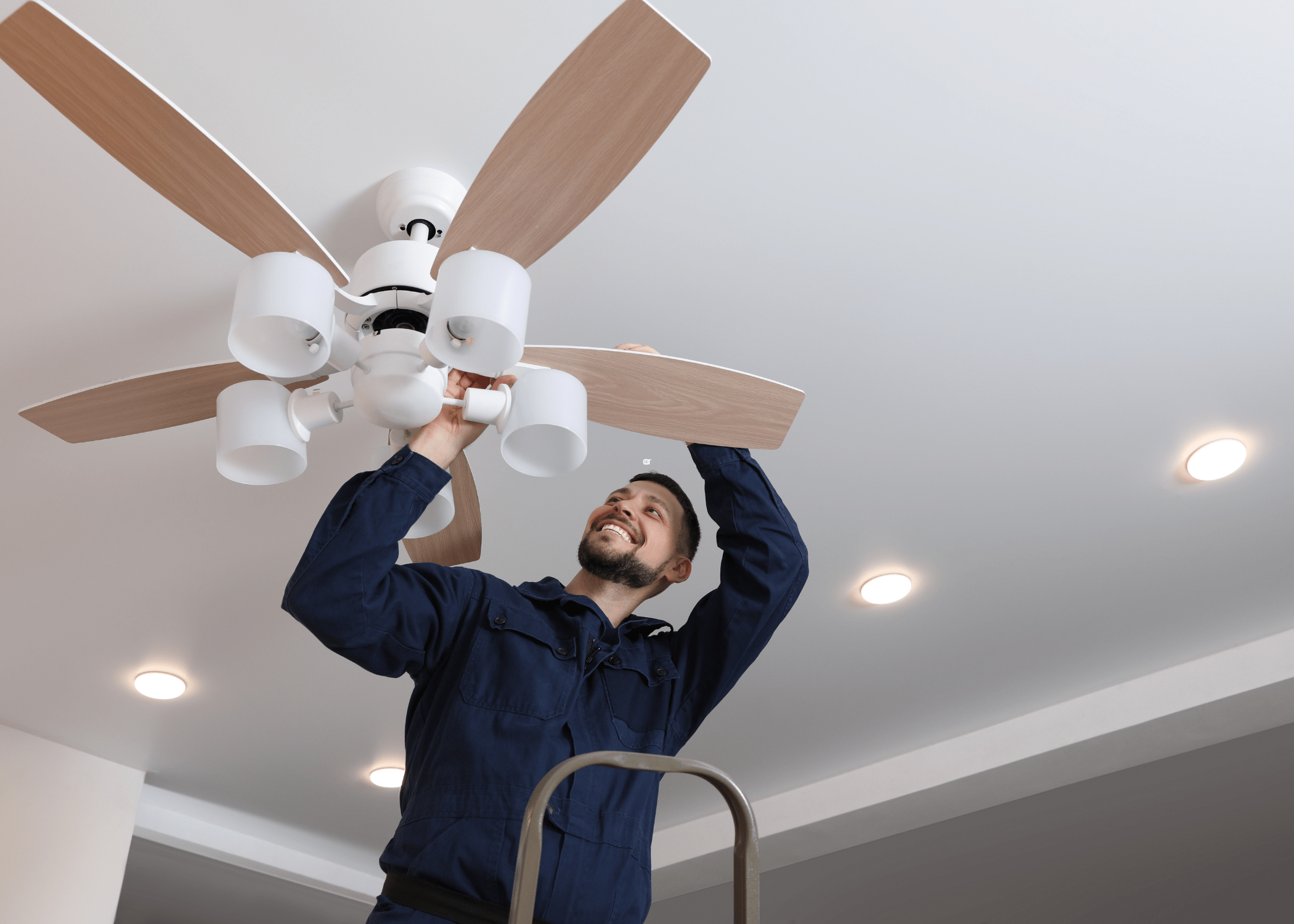
Checking Blade Alignment
Blade alignment is a critical factor in balancing a ceiling fan. Use a measuring tape to measure the distance from each blade tip to the ceiling. All blades should be at the same distance. If you find any discrepancies, gently bend the misaligned blades to match the others. Be cautious not to bend them too much, as this can cause further imbalance.
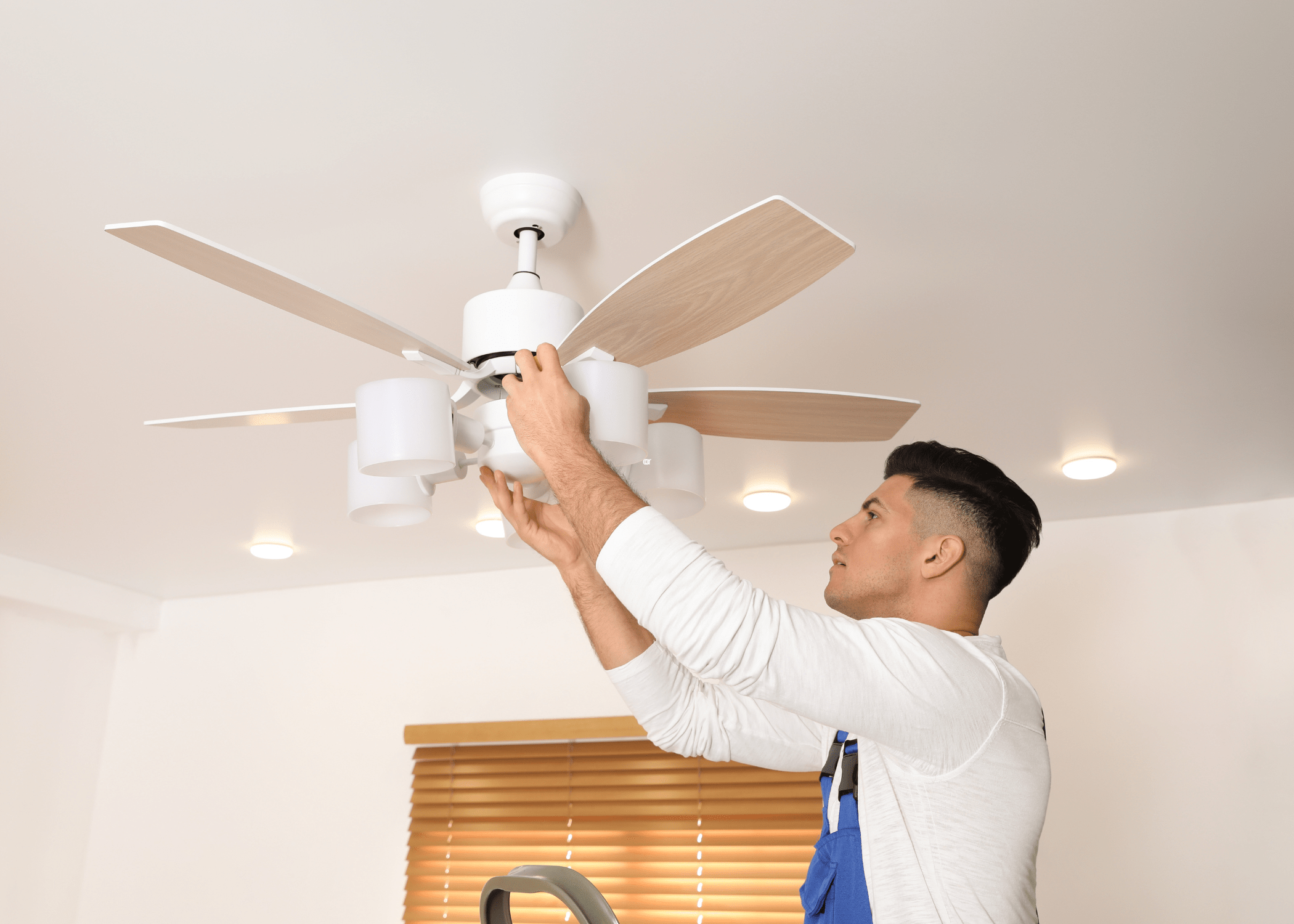
Using a Ceiling Fan Balancing Kit
A ceiling fan balancing kit is an invaluable tool for addressing persistent wobbling issues. Follow these steps to use the kit effectively:
- Attach the balancing clip to the edge of a blade, starting at the midpoint.
- Turn on the fan and observe if the wobbling decreases.
- Move the clip incrementally along the blade, testing at different points.
- Once you find the position that minimizes wobbling, attach the adhesive balancing weight to the top of the blade at that location.
Repeat this process for each blade until the fan operates smoothly.
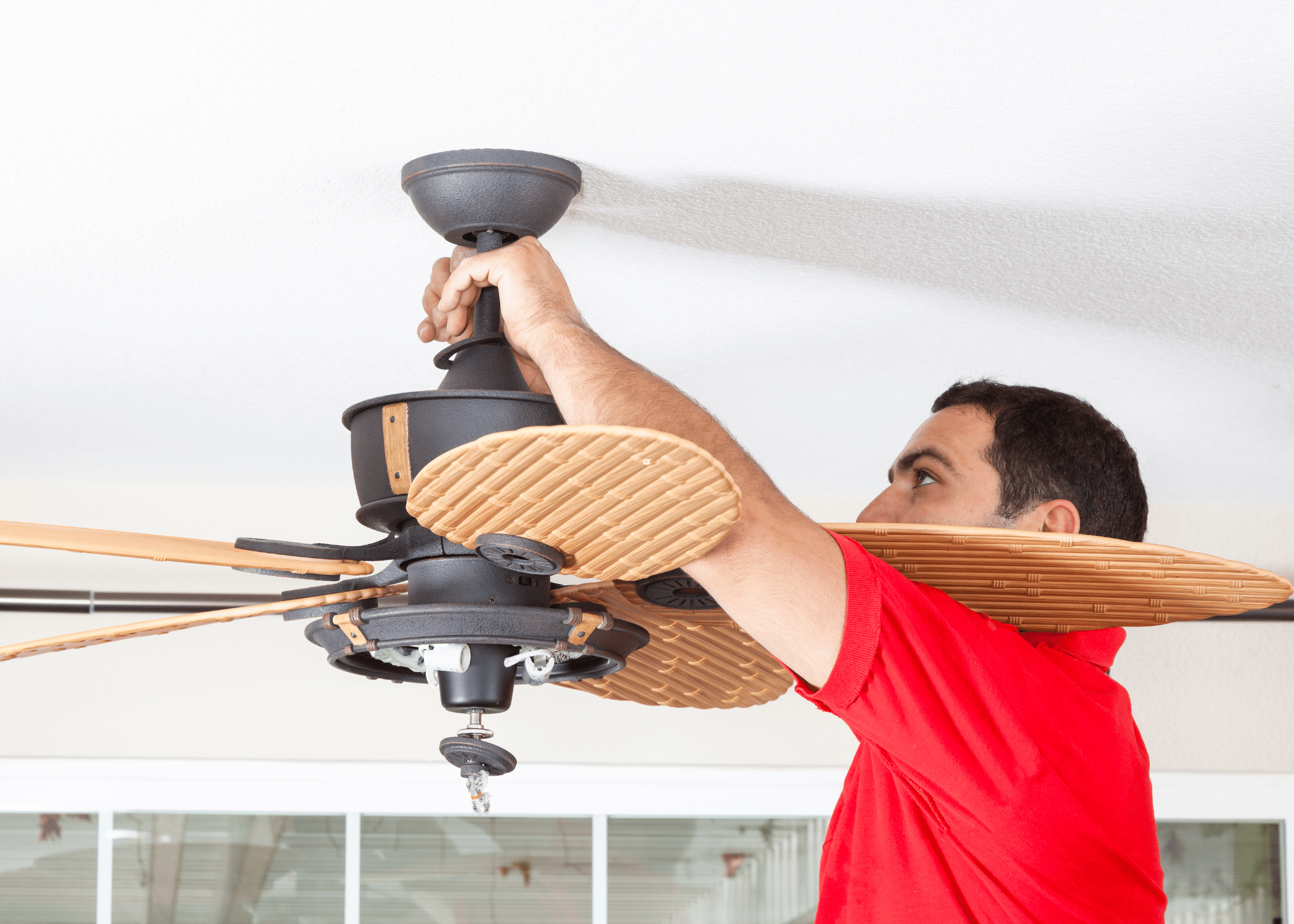
Testing the Fan
After making adjustments, it’s essential to test the fan at various speeds. Start with the lowest setting and gradually increase to the highest speed. Observe the fan’s performance and listen for any unusual noises. If the fan operates smoothly at all speeds, you have successfully balanced it.
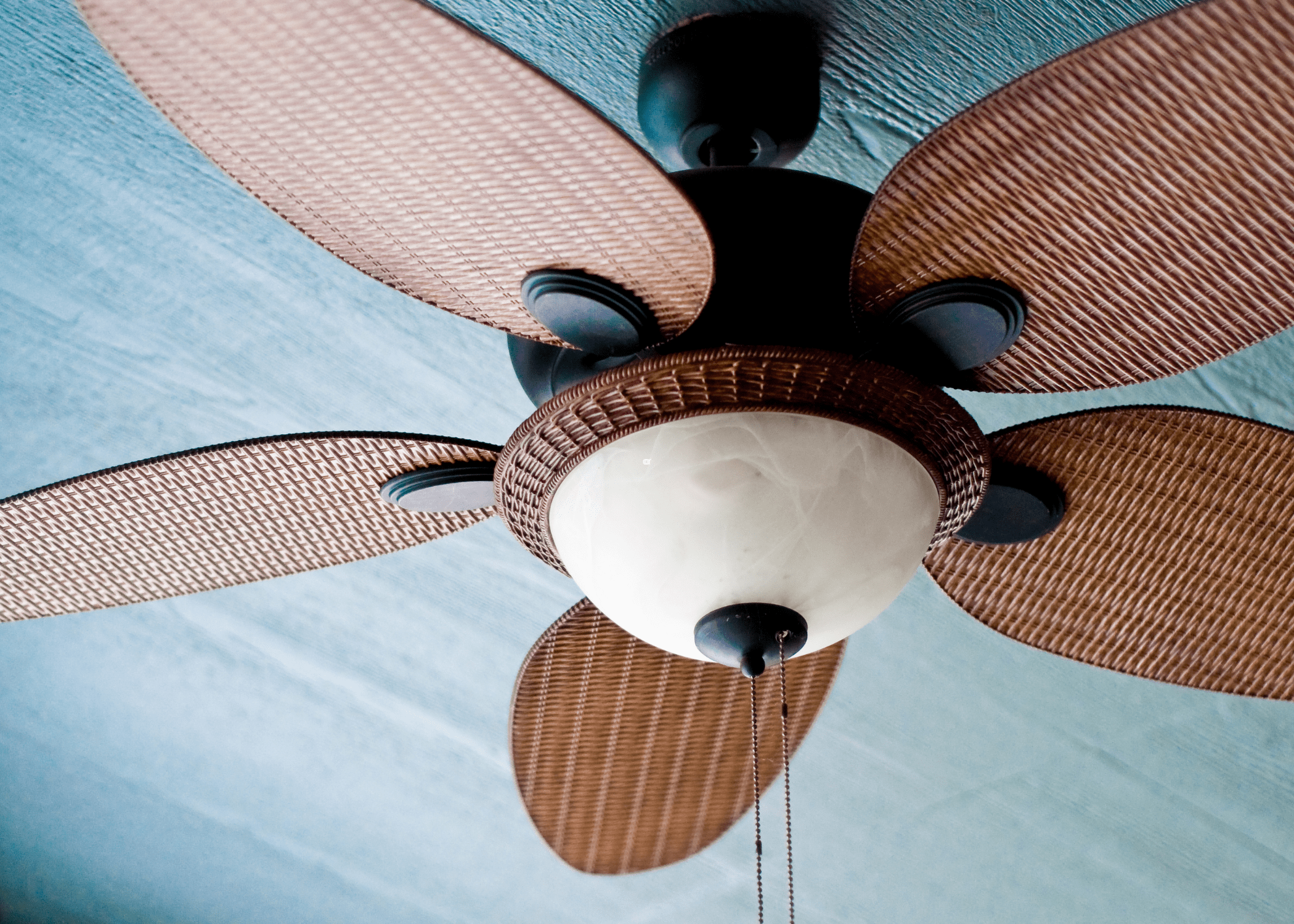
Regular Maintenance Tips
To maintain a balanced ceiling fan, consider these regular maintenance tips:
- Clean the fan blades regularly to prevent dust buildup.
- Check and tighten screws and fasteners periodically.
- Monitor the fan’s performance and address any wobbling issues promptly.
Balancing a ceiling fan may seem daunting, but with the right tools and steps, it can be straightforward. Regular maintenance and attention to detail will ensure your ceiling fan operates efficiently and quietly, providing comfort and energy savings for years to come.
Related Articles
- It Would Be a Mistake to Install Home Security Cameras in These 3 Locations
- How to Splice Wires For DIY Projects Around Your Home
- 8 Home DIY Projects That Will Improve Your Handyman Skills
Ready to start your next project? Join our DIY community to receive tool tips, how-to guides, and exclusive creative insights. Subscribe to the ManMadeDIY newsletter now!
Frequently Asked Questions (FAQs)
Why is my ceiling fan wobbling?
A ceiling fan can wobble for several reasons, including uneven blade weight, loose screws, or an unbalanced motor. Often, it’s a combination of these factors. Ensuring that all components are securely fastened and that the blades are balanced will typically resolve the issue.
How do I know if my ceiling fan is unbalanced?
An unbalanced ceiling fan will usually exhibit visible wobbling or shaking when in operation. Additionally, you might hear unusual noises like clicking or humming. If you notice these symptoms, it’s a good indication that your fan requires balancing.
What tools do I need to balance a ceiling fan?
To balance a ceiling fan, you’ll need a few basic tools: a screwdriver, a fan balancing kit (which typically includes clip weights and adhesive weights), and a ladder. Some balancing kits come with instructions, but you can also find tutorials online.
How do I balance my ceiling fan using a balancing kit?
First, turn off the fan and ensure it’s completely stopped. Attach the balancing clip to the edge of one blade, then turn the fan on to see if the wobble lessens. Move the clip to different blades and positions until you find the location that minimizes the wobble the most. Once identified, replace the clip with an adhesive weight in the same position. Test the fan again to ensure stability.
Can I balance a ceiling fan without a balancing kit?
Yes, you can balance a ceiling fan without a kit. You can use household items like coins and tape as makeshift weights. Attach a coin with tape to a blade and test the fan. Adjust the position of the coin until the wobble is minimized. Once you find the right spot, secure the coin more permanently.
How often should I check the balance of my ceiling fan?
It’s a good idea to check the balance of your ceiling fan annually or whenever you notice a wobble. Regular maintenance can prevent larger issues and ensure the longevity of your fan. Tighten any loose screws and clean the blades to maintain optimal performance.
What should I do if my fan continues to wobble after balancing?
If your fan continues to wobble after balancing, check for other issues, such as warped blades, a misaligned motor, or an unstable mounting bracket. If the problem persists, it may be best to consult a professional to ensure there are no underlying issues that require more advanced repair.



![DIY Auto Detailing [10 Must-Haves for your Garage]](https://www.manmadediy.com/wp-content/uploads/sites/52/2021/03/car-sponge-81861-269x170.jpg)

